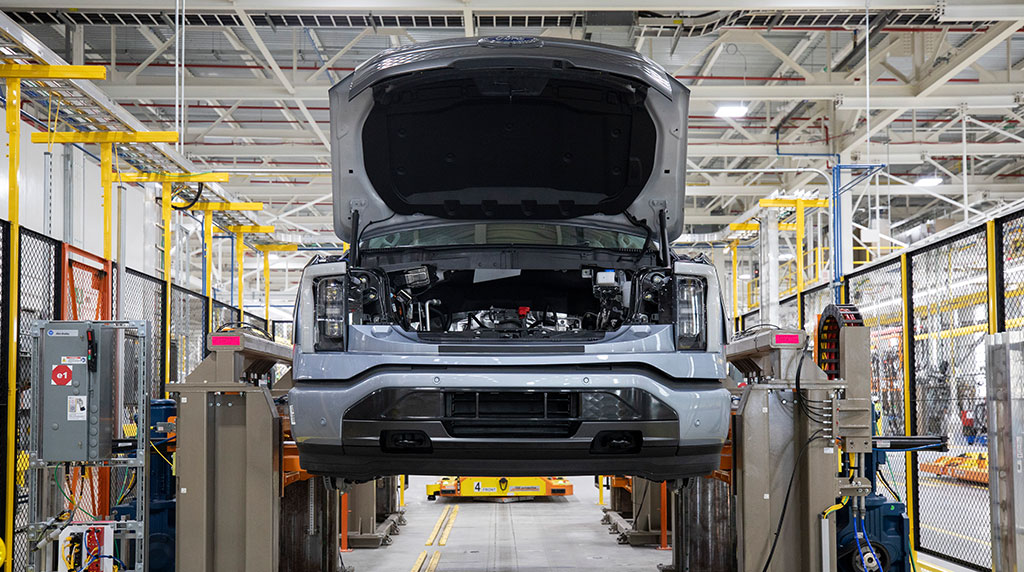The ongoing struggle could not come at a worse time for the legacy car maker which needs production to be as efficient as possible as it makes its transition to becoming a major player in the EV market – a market that is proving to be profitless for many car makers.
In its latest filing, the company saw a drop of 90 per cent in fourth quarter net income from $US12.3 billion a year earlier to $US1.3 billion in Q4 22. Overall net income for 2022 was a loss of $US2 billion; a $US19 billion reversal from the $US17 billion made in FY 2021.
In another outbreak of candour Ford CEO Jim Farley said in a statement that Ford had missed out on $US2 billion in profit on issues in the car maker’s business that were within its control.
Mr Farley said: “We left about $2 billion in profits on the table that were within our control,”
“We should have done much better last year. This has been humbling for both me and my team.”
The losses booked by Ford came in spite of increased revenues for FY 2022 of $US158 billion compared with $US136.3 billion in FY 2021.
Mr Farley told analysts that Ford has “deeply entrenched issues in our industrial system that have proven tough to root out and the strength of our products and revenue has masked this dysfunctionality for a long time”.
“To say I am frustrated is an understatement because the year could have been so much more at Ford.”
Ford blamed production “instabilities” that raised costs, along with lower-than-expected volumes due to chip shortages and other supply chain issues.
The company said that of the $US2 billion “left on the table” by Ford, $US1 billion was caused by lower production of around 100,000 units due to chip shortages and the consequent lost sales.
The other billion left on the table was caused by operational costs that the company is attempting to weed out of the system.
Ford chief financial officer John Lawler said some aspects of Ford’s attempts to overhaul its systems were falling behind and “need more work”.
“Our cost structure is not competitive and our quality is not where it needs to be,” he told reporters.
“In the simplest terms, we need to improve quality and lower warranty costs now.”
Quality is pivotal to cost reduction as poor quality not only reflects badly on Ford’s reputation, the consequent inflated warranty costs come straight off the bottom line.
Mr Lawler said Ford hoped to reduce warranty costs by $US2 billion in 2023 as part of a target cost reduction totalling $US5 billion and that 2023 would be “a pivotal year for us as we reshape the company”.
He said a key goal for Ford in 2023 would be chip sourcing and that the company is amending circuit designs to use chips that are more commonly available in the market compared with older and larger chip designs that have been a feature of the auto market.
Mr Lawler described chip sourcing as “hand-to-hand combat”.
In 2023, Ford currently expects to earn between $US9 billion to $US11 billion in adjusted EBIT. This presumes seasonally adjusted annual rates of about 15 million vehicle sales in the US and about 13 million in Europe.
Behind those estimates are a variety of likely trade-offs:
Headwinds
- Mild recession in the US and a moderate recession in Europe
- Higher industry-wide customer incentives as vehicle supply-and-demand rebalances
- A lower profit from Ford Credit
- A continued strong U.S. dollar
- Lower past service pension income
- Growth-related investments (eg in customer experience, connected services and capital expenditures)
Tailwinds
- Supply chain improvements
- Higher industry volumes
- Launch of the all-new Super Duty truck
- Lower costs of goods sold, including for materials, commodities, logistics and other parts of the industrial platform.
Footnote: While recalls are a way of life for OEMs, Ford in the US has had more than 62 recalls in 2022 that will ultimately affect more than 7.6 million vehicles.
The 7.6 million recalls for Ford compares with less than one million Hyundai recalls in 2022, Chrysler 1.1 million, GM 1.5 million and 2.3 million Tesla vehicles recalled.
By John Mellor













 Read More: Related articles
Read More: Related articles

